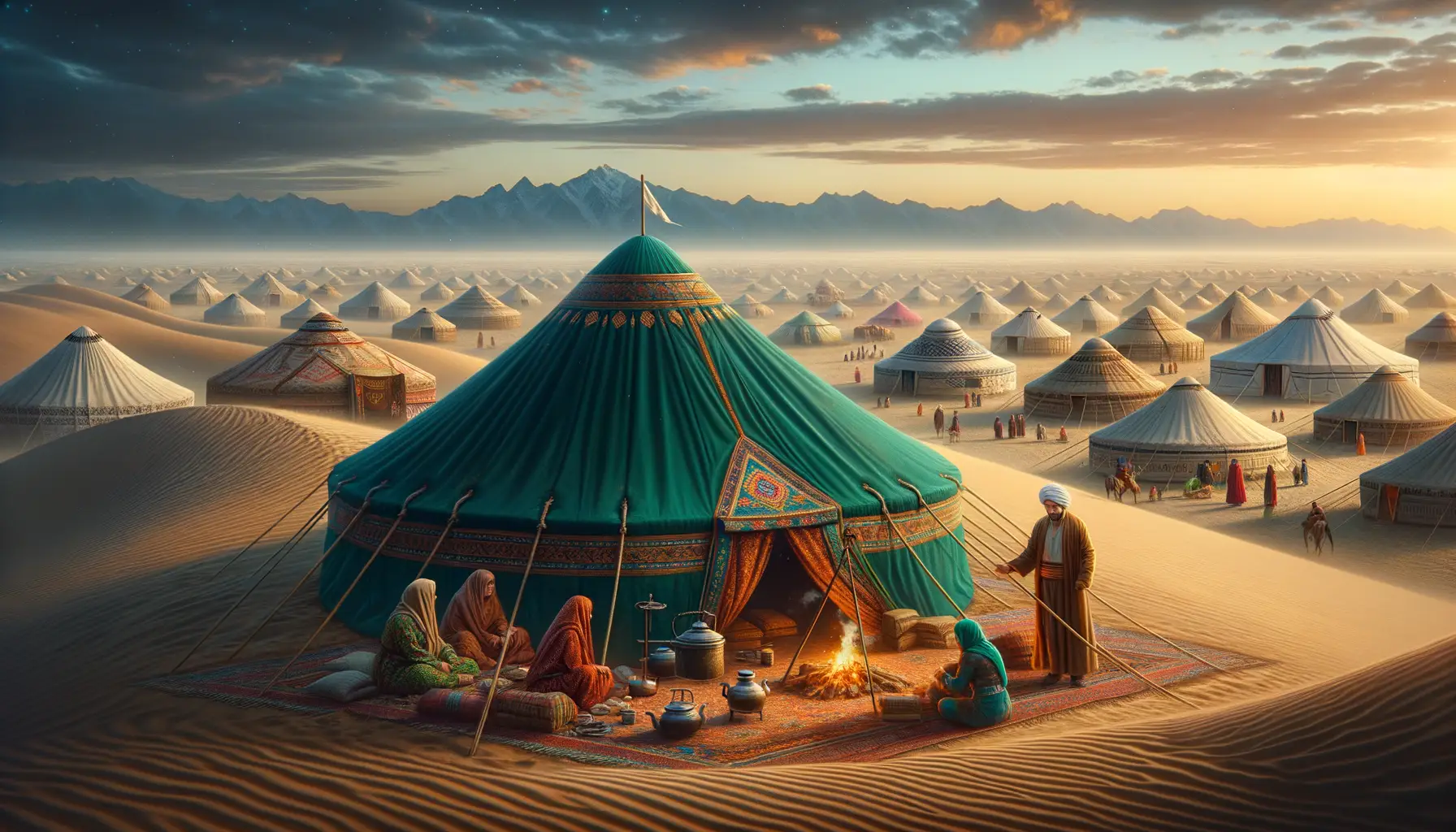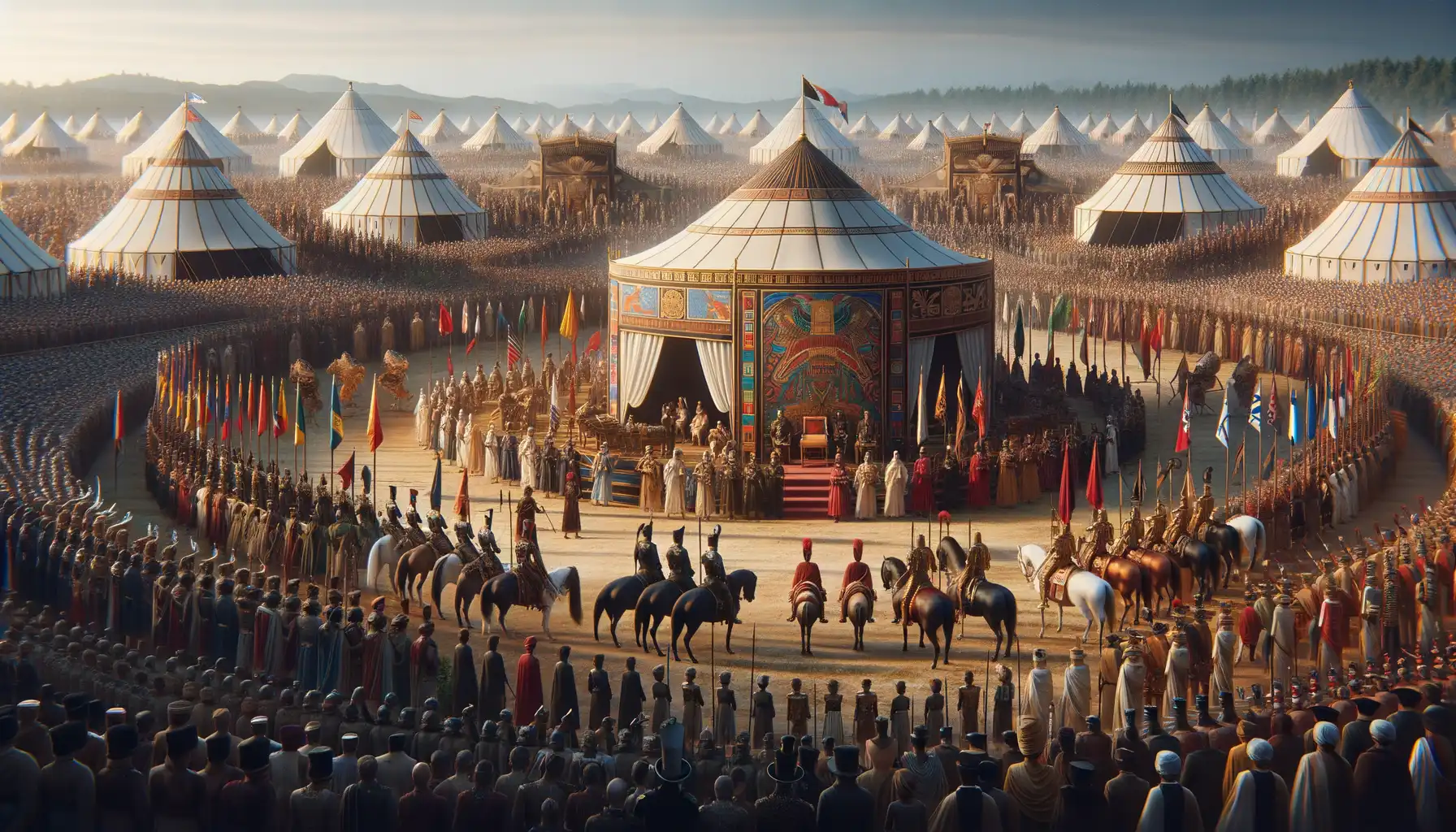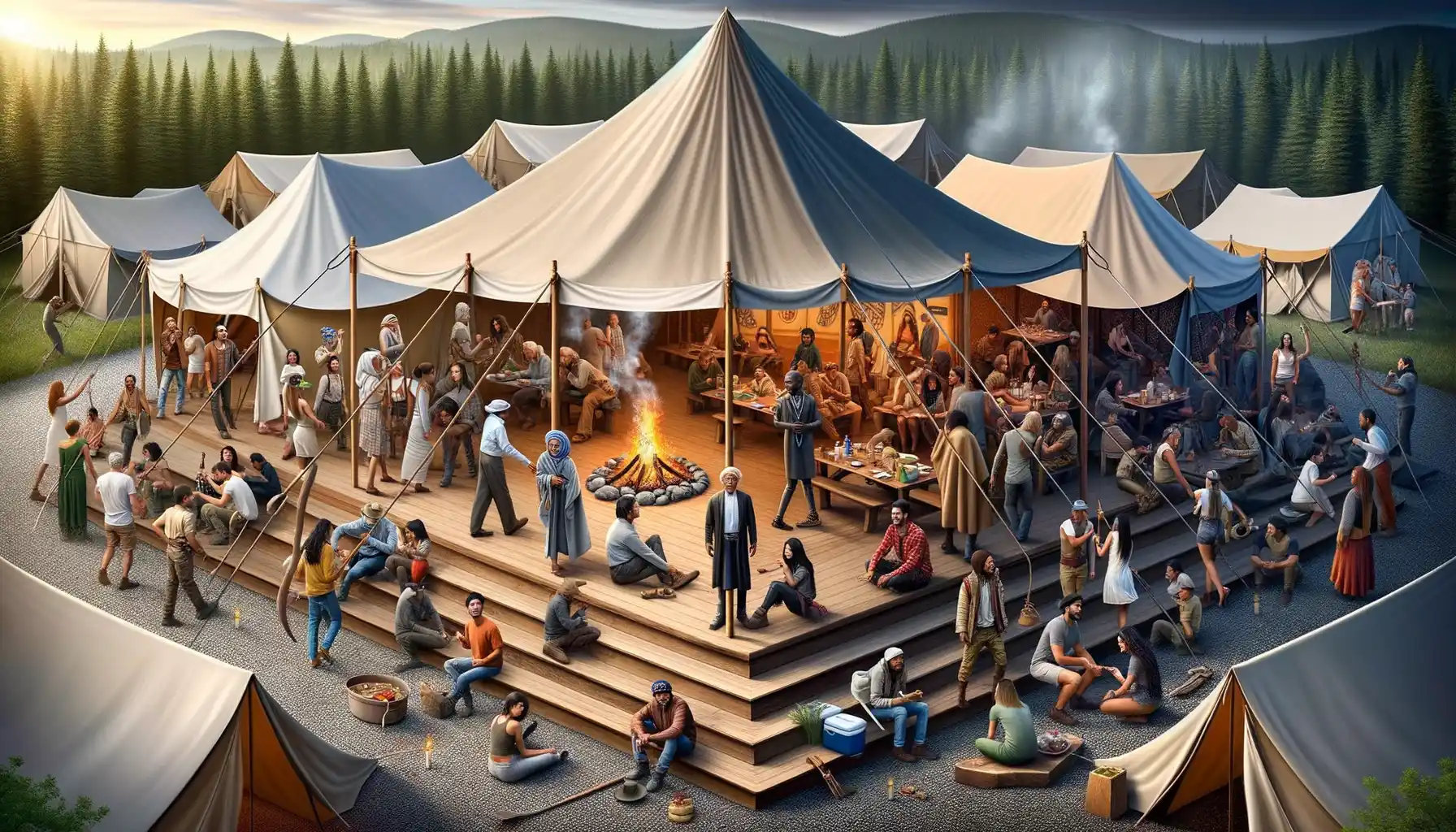Introduction to the Significance of Tents in History
The Timeless Shelter That Shaped History
Imagine standing in a vast desert under the burning sun or amidst sprawling grasslands where horizons blur into the sky. What was the one thing ancient travelers, soldiers, and nomads relied on? A trusty tent—a portable sanctuary in the midst of chaos. These unassuming structures may seem simple today, but their impact on history is profound.
From the opulent tents of Mongol emperors draped in silk to the humble Bedouin shelters woven from goat hair, tents have been more than just roofs over weary heads. They’ve symbolized resilience, adaptability, and even power. Picture a Roman army encampment, its rows of tightly pitched tents broadcasting military order. Or think of Abraham, whose life in *Genesis* revolved around tents, embodying a spiritual journey of faith and humility.
- In ancient times, tents were the backbone of mobility, enabling civilizations to thrive in harsh, unforgiving terrains.
- They served as meeting places, ceremonial hubs, and even makeshift palaces for rulers on the move.
It’s fascinating, isn’t it? The tent’s simplicity belies its role as a transformative tool—shaping societies, facilitating connection, and anchoring cultural traditions.
Cultural and Religious Importance of Tents

The Sacred Shelter: Tents in Spiritual Practices
Throughout history, tents have been more than just a practical refuge—they’ve served as sacred spaces for profound spiritual and communal connections. Picture this: the rhythmic flapping of fabric in the wind, the earthy scent of woven fibers, and a sense of intimacy that no towering cathedral could replicate. For many cultures, tents became not just shelters but vessels for their beliefs.
- In the vast deserts of the Middle East, the portable **Bedouin tent** symbolized not just home but also hospitality—a divine principle in Islamic tradition.
- In biblical tales, the **Tabernacle**, a grand yet mobile tent, carried the presence of God with the Israelites through their wandering days.
- For nomadic Mongolian tribes, the iconic **yurt** wasn’t merely a dwelling; it embodied the universe itself, aligning its circular design with cosmic balance.
The Dance Between Community and Ceremony
Tents often blur the line between the earthly and the divine. Consider the Native American **tipi**, where spiritual rituals, storytelling, and ceremonies unfolded under one roof. It’s no exaggeration to call these structures living beings of culture. In Tibetan Buddhist traditions, vibrantly decorated prayer tents serve as gathering hubs for festivals, meditation, and chants, echoing prayers into the heavens.
Even in modern times, wedding marquees or festival tents recreate this magical ambiance. Don’t they feel like time machines, pulling threads from ancient traditions while weaving fresh memories?
Tents in Ancient Military and Political Ceremonies

The Command Centers of Ancient Battlefields
In the chaos of ancient warfare, where dust and shouts mingled with the clang of swords, there stood a beacon of order amidst the storm: the military tent. These weren’t just shelters; they were the nerve centers of empires. Picture this—beneath a grand tent’s richly embroidered canopy, commanders like Alexander the Great mapped out strategies by flickering lamplight. The walls of these tents often held more secrets than any castle, whispering of invasions, treaties, and betrayals.
These tents weren’t all function and no form, though. Oh, no. They were statements. Leaders used them to flaunt their power and intimidate enemies. Some were adorned with vibrant flags and insignias, others stretched vast enough to host entire councils of war. Imagine standing in one—its decor screaming authority, every detail crafted to awe allies and unsettle foes.
- The Roman legionary tent, practical yet reliable, symbolized unity and discipline within the ranks.
- Mongolian yurts of Genghis Khan served not just as portable homes but also mobile fortresses during campaigns.
These tents shaped destinies, one conversation or secret pact at a time. Can you feel their weight in history?
Symbolism and Representations of Tents Across Eras

The Tent as a Canvas for Human Stories
Let’s take a step back and imagine the humblest of shelters—a tent. It’s not just fabric and poles; it’s a storyteller in disguise, holding centuries of human emotions within its folds. Across eras, tents have embodied more than practicality—they’ve come to symbolize protection, impermanence, and even grandeur. Think of medieval merchants showcasing rare silks beneath colorful awnings. Or nomads cradling their lives under rich-textured yurts, the stars peeking through gaps like celestial witnesses to their journey.
In some cultures, a tent is revered as a sacred space—like the biblical Tabernacle, a tent designed to house the divine. Meanwhile, in royal courts of old, massive, opulent tents were nothing less than portable palaces, broadcasting power and prestige as vividly as the jeweled crowns they sheltered.
- In Arabia, tents became symbols of hospitality, welcoming both strangers and allies with open flaps.
- Among the Mongols, the ger (a circular felt tent) reflected the balance of nature and humanity.
The way people decorate, inhabit, and even dismantle a tent whispers secrets about their era, values, and dreams. Did you know that Victorian explorers brought their sense of home into the wilderness through extravagant canvas structures complete with chandeliers? A tent, after all, isn’t limited by geography or time—it’s a living, breathing emblem of what it means to adapt, endure, and hope.
Tents in the Realm of Imagination
The symbolism of tents doesn’t end in history books; it spills over into our collective imagination. Writers and filmmakers often use tents as metaphors for longing and transformation. Picture circus tents—flashy yet ephemeral—standing tall in vivid tales of adventure. Or how about children’s blanket forts, miniature echoes of ancestral shelters, sparking creativity and wonder?
Even today, tents tug on our emotions. They evoke thoughts of cozy campfire nights or festival grounds pulsating with life. Yet they also remind us of resilience, especially when we see them providing refuge after natural disasters. Their meanings shift, but their essence remains: a space where people find shelter, connection, and themselves.
Modern-Day Reflections and Preservation of Tent Traditions

Echoes of Tradition in a Fast-Paced World
Tents, once the heart of ancient ceremonies, may seem worlds apart from our modern lives dominated by skyscrapers and Wi-Fi. But look closer—these humble shelters still whisper echoes of our shared history. Ever attended a wedding under a stunningly decorated canopy? Or been mesmerized by the glimmering lights inside a festival tent? These traditions are far from relics—they’re alive, evolving, and weaving new stories.
Today, tents bridge the old and the new, blending heritage with innovation. Picture this: a Bedouin-style setup reimagined for a chic desert party, or a climate-conscious geodome used for eco-friendly retreats. Whether it’s preserving the delicate designs of a traditional yurt or using cutting-edge technology to create sustainable materials, the art of the tent is flourishing.
- Pop-up garden parties inspired by tribal nomads.
- Elaborate wedding marquees echoing royal Mughal pavilions.
- Immersive storytelling tents at cultural festivals.
These modern applications not only honor their origins but also remind us of something deeply human: the universal need for shelter, connection, and a space to celebrate what matters most.





